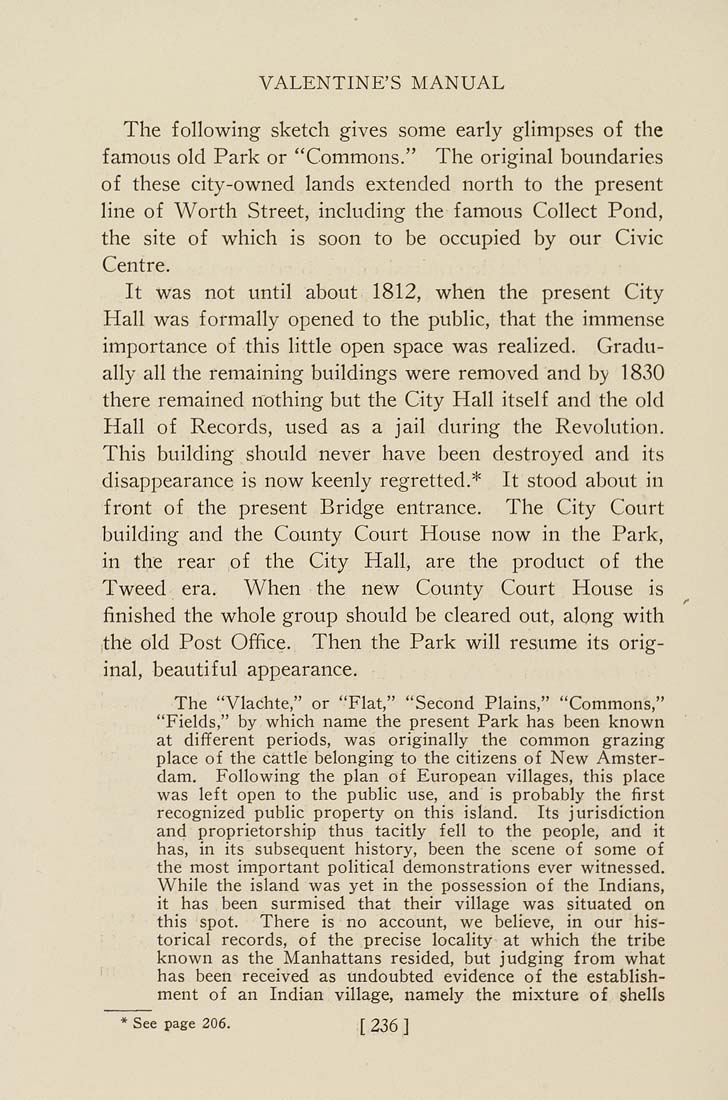VALENTINE'S MANUAL
The following sketch gives some early glimpses of the
famous old Park or "Commons." The original boundaries
of these city-owned lands extended north to the present
line of Worth Street, including the famous CoIIect Pond,
the site of which is soon to be occupied by our Civic
Centre.
It was not until about 1812, when the present City
Hall was formally opened to the public, that the immense
importance of this little open space was realized. Gradu-
ally all the remaining buildings were removed and by 1830
there remained nothing but the City Hall itself and the old
Hall of Records, used as a jail during the Revolution.
This building should never have been destroyed and its
disappearance is now keenly regretted.* It stood about in
front of the present Bridge entrance. The City Court
building and the Caunty Court House now in the Park,
in the rear of the City Hall, are the product of the
Tweed era. When the new County Court House is
finished the whole group should be cleared out, along with
the old Post Offîce. Then the Park will resume its orig-
inal, beautiful appearance.
The "Vlachte," or "Flat," "Second Plains," "Coraraons,"
"Fields," by which narae the present Park has been known
at different periods, was originally the coraraon grazing
place of the cattle belonging to the citizens of New Araster-
dam. FoIIowing the plan of European villages, this place
was left open to the public use, and is probably the first
recognized public property on this island. Its jurisdiction
and proprietorship thus tacitly fell to the people, and it
has, in its subsequent history, been the scene of some of
the most important political deraonstrations ever witnessed.
While the island was yet in the possession of the Indians,
it has been surraised that their village was situated on
this spot. There is no account, we believe, in our his-
torical records, of the precise locality at which the tribe
known as the Manhattans resided, but judging frora what
has been received as undoubted evidence of the establish-
ment of an Indian village, namely the raixture of shells
' See page 206. [ 236 ]
|








